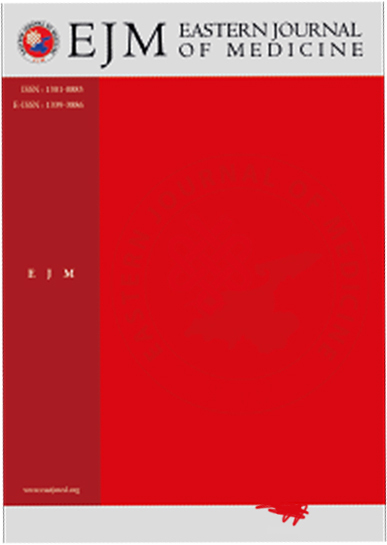Histopathological and mechanical properties of different meshes in a rat model of pelvic prolapse surgery
Gulhan Gunes Elci1, Erkan Elci1, Cihan Kaya2, Numan Cim3, Ali Kolusari3, Remzi Erten4, Gulay Bulut41Ministry of Health of the Republic of Turkey Van Region Training and Research Hospital, Department of Obstetrics and Gynecology, Van, Turkey2Bakirköy Dr Sadi Konuk Training and Research Hospital, Department of Obstetrics and Gynecology, Istanbul, Turkey
3Yüzüncü Yil University, Faculty of Medicine, Department of Obstetrics and Gynecology, Van, Turkey
4Yüzüncü Yil University Faculty of Medicine Department of Pathology, Van, Turkey
INTRODUCTION: Different types of mesh materials are used to support pelvic structures in urogynecologic procedures. Our aim was to compare histopathological and mechanical effects of Prolene®, UltraPro®, Vypro II®, and Permacol® meshes used in pelvic organ prolapse.
METHODS: Thirty Sprague-Dawley rats were randomized into five groups. Group 1 served as a sham-operated control (n=6); Prolene® was used in group 2 (n=6), UltraPro® in group 3 (n=6), Vypro II® in group 4 (n=6), and Permacol® in group 5 (n=6). A 0.5 × 1 cm mesh was placed between the paravaginal tissue and bladder. After 12 weeks, the rats were reoperated and meshes were excised. Histopathological tissue reactions were compared.
RESULTS: The muscle penetration rate was 67% in the Prolene® group, which was significantly higher than that in the other groups (p=0.026). Minimum preserved postoperative surface area was seen with Prolene® at 0.31 cm2 and maximum with UltraPro® at 0.45 cm2, which was statistically significant. UltraPro® had the most preserved postoperative surface area and less shrinkage than the other meshes.
DISCUSSION AND CONCLUSION: The mesh materials cause an inflammatory reaction in surrounding tissue. Prolene® mesh had superior muscle penetration and tensile strength compared to the other materials.
Manuscript Language: English














